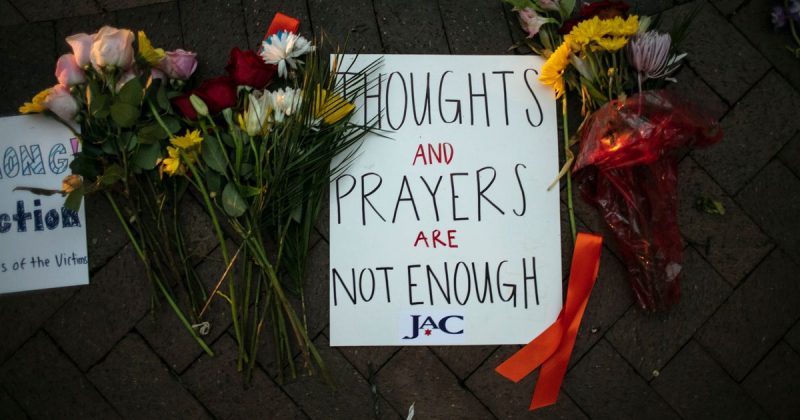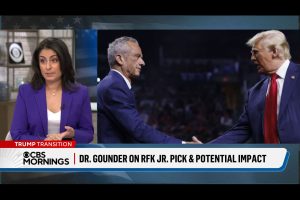1 Thing That Can Have A Huge Effect After A Mass Shooting

Just after 6 p.m. Wednesday in Lewiston, Maine, a man armed with an AR-15- style weapon entered multiple locations, including a bar and a bowling alley, and opened fire killing 18 people and injuring 13.
Lewiston is home to 36,617 people, some of whom fled into the woods to escape the shooter. One man hid inside bowling alley machinery before running for his life. The suspect in the shooting, a 40-year-old Army reservist and certified tactical and firearm instructor, Robert Card, fled into the night and is currently the target of a manhunt.
As I watched the details emerge from the safety of my home in Highland Park, Illinois, one video left me breathless. There on my screen appeared to be a family — a man, woman and child — who scurried to safety, causing my stomach to sink and my eyes to burn with tears.
On July 4, 2022, my 6-year-old son and I fled the holiday parade we were in when a man opened fire with an AR-15-style weapon and killed seven people, injured 48 and sent thousands of paradegoers running for their lives.
The footage from Lewiston took me right back to that day.
In the year since our shooting, I’ve become a full-time gun safety advocate. I’ve also learned firsthand what mass shooting survivors and their communities need and how disproportionate the allocation of resources truly is.
One thing is certain: The ripple effects of mass shootings go far beyond the number of people injured and killed. The entire community is affected, and resources are most likely needed for every resident.
In the days following a mass shooting, many survivors will experience post-traumatic stress. Some will not be able to work. Some won’t have health insurance or paid time off. Getting mental health care and resources to allow survivors time to take care of themselves is critical to the health of the entire community.
In our town of Highland Park, within a day of our shooting, the high school was transformed into a crisis center filled with dozens of therapists, piles of cheerful stuffed animals, and advocates from the state attorney’s office. The services at the center were free to anyone who needed help, and it remained in place for weeks.
Uvalde, Texas, where a mass shooter used an AR-15-style weapon to murder 19 students and two educators at Robb Elementary School, did not erect a crisis center like Highland Park. Nor did Willowbrook, Illionis, a town one hour away from Highland Park where a gunman killed one person and shot 23 others at a Juneteenth party where more than 400 people had gathered.
In fact, every single day there are mass shootings across this country, and communities are left to pick up the pieces on their own without the necessary resources to help them heal.
I believe part of the problem lies in the reporting of mass shootings. Currently, we focus on the number of people killed and injured and we rarely talk about the total number of people affected by a mass shooting event — someone like my son, who was uninjured but ran for his life and needed thousands of dollars in therapy and additional taxpayer-funded resources at school.
We need to change that if we want to make sure that every person affected by a mass shooting has the help they need.
We can do this by expanding the conversation to include the number of residents in the community and the number of people present at a mass shooting — not just those killed or injured.
As the Lewiston mass shooting was unfolding, I knew I needed to act fast. I contacted the Lewiston police and the local news stations and asked them to include the number of residents and the number of those present at the mass shootings. During the first briefing around 9 p.m., a city councilman stated the populations of Lewiston: just under 40,000 people.
Focusing on the full community and the myriad ways that all of its members may be experiencing trauma allows for more opportunities to ensure everyone who needs help gets it. It can also help all of us reconceptualize how we understand gun violence and how deeply it can affect all of us — including, but not solely, direct victims.
The coming weeks and months will be difficult for all of those people and for the rest of our country as we mourn and try to make sense of another senseless and preventable gun tragedy. Lewiston and its people will come to find their new normal, and the rest of the country will carry them through this like they carried my community. Those of us who are fighting to end gun violence in the names of those who have been lost will continue to fight, and it’s my solemn hope that Lewiston will be the last community to bear this weight.
Ashbey Beasley is a proud Indigenous wife and mother, a serial entrepreneur and a mass shooting survivor turned activist.








